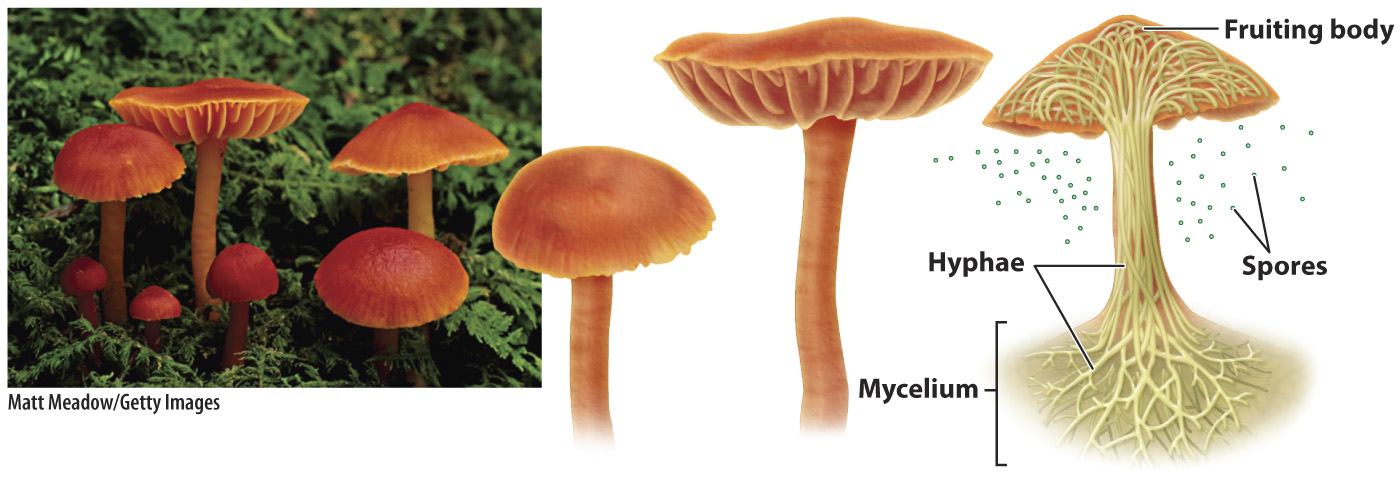Multicellular fruiting bodies facilitate the dispersal of sexually produced spores.
Fungi employ an astonishing array of mechanisms to enhance spore dispersal. Particularly conspicuous are the multicellular fruiting bodies produced by some fungi, which are structures that allow the dispersal of sexually produced spores. (Fungal fruiting bodies should not be confused with the fruits of flowering plants, which are unrelated and very different structures.) Mushrooms, stinkhorns, puffballs, bracket fungi, truffles, and many other well-
Fruiting bodies are highly ordered and compact structures compared with the mycelia from which they grow, yet they are constructed entirely of hyphae (Fig. 34.11). In fact, in many cases their mechanisms of spore dispersal demand a high degree of structural precision. Yet we know little of the developmental processes that allow tip-

The fruiting bodies of many fungi rise above the ground or grow from the trunks of dead trees, so the sexually produced spores are released high above the ground. But elevation by itself is not enough to ensure dispersal. Thus, many fungi forcibly eject their spores, achieving velocities of more than 1 m/s that allow the tiny spores to penetrate and travel beyond the layer of unstirred air that surrounds the fruiting body. Once airborne, the spores are transported efficiently through air (Fig. 34.12). Other fungi rely on external agents such as raindrops or animals to move their spores around. In section 34.3, we will encounter examples of the diverse dispersal mechanisms found in the fungi.
HOW DO WE KNOW?
FIG. 34.12
What determines the shape of fungal spores that are ejected into the air?
BACKGROUND Many fungi disperse their spores by ejecting them forcibly into the air. For spores to be picked up by the wind, however, they must escape a layer of still air called the boundary layer that lies close to the ground. Escape from the boundary layer is easier if spores have a size and shape that minimize drag, the resistance of air to the movement of an object.
HYPOTHESIS In fungi that eject their spores into the atmosphere, natural selection favors spore shapes that minimize drag.
EXPERIMENT Working from computer models for minimizing drag on airplane wings, scientists modeled spore shapes that minimize drag. These models took into account spore size as well as the physical characteristics of the air through which spores travel. The scientists then measured spore shape for more than 100 species of spore-

RESULTS Nearly three-
CONCLUSION Natural selection has acted on fungi to facilitate spore dispersal by wind.
SOURCE Roper, M., et al. 2008. “Explosively Launched Spores of Ascomycete Fungi Have Drag-